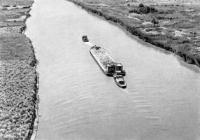You are here
Rampart Merz.

Tours on historical monuments of Turkmenistan.
The rampart Merz, these are the remains of an irrigational construction of Sasanid time (III - VII century AD) in the Kaakha Etrap of Ahal Region. The shaft intended for a delay of the rain and flood waters which are flowing down in the spring from mountains on the surface of the plain.
By means of this barrier certain sites were temporarily flooded that is applied still at one-irrigation ("oytachny") agriculture. Surplus of water was removed by the large channels providing watering of sites outside a shaft on border with sands.
The flat arches of a shaft turned by camber to the North are in areas where the seasonal superficial drain reaches the largest sizes and, at the same time, the territory is most suitable for irrigation agriculture.
The opinion of some researchers that the rampart Merz represents the remains of one of the ancient defensive walls which are put up on northern border of the state Sasanid for protection against attacks of nomads, was not confirmed during archaeological inspection.
The shaft Froze has on average width the reasons of 7,5 m, height of 1,5 m. It consists of separate pieces on 5 - 10 kilometers which last along the foothills, sometimes being interrupted, from Babadurmaz to the settlement Chaacha, in total about 150 kilometers.
The shaft is put from dense clay with inclusion of small fragments of ceramics. Bevels of walls of a shaft flat, height is absolutely insignificant therefore there are no bases to say that it could be a serious obstacle for nomad.
Besides from South side the shaft is adjoined by the powerful ground deposits presented by layers of clay of red and green colors the evidence of centuries-old use of a shaft as an obstacle for water streams.
Authority:
On materials of information department of the State committee of Turkmenistan on tourism and sport.







